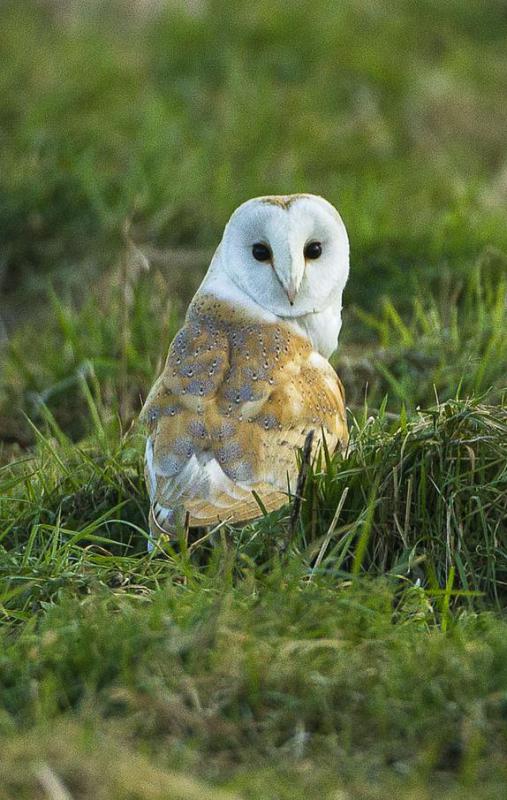At AllThingsNature, we're committed to delivering accurate, trustworthy information. Our expert-authored content is rigorously fact-checked and sourced from credible authorities. Discover how we uphold the highest standards in providing you with reliable knowledge.
What is a Flying Squirrel?
A flying squirrel is a type of rodent. It is a member of a tribe of squirrels called family Sciuridae. Within this tribe, there are 43 different species.
A flying squirrel does not actually fly. Instead, it launches itself from a high position and extends loose flaps of skin from its arms to its legs. These extended skin flaps allow it to glide through the air. As such, flying squirrels are actually squirrels that glide.

The flying squirrel has no problem maneuvering once it is in the air. It is able to steer and direct its flight by changing the tautness of its wing flaps. The flying squirrel’s tail is very important to its flight. It acts as a stabilizer while the squirrel is flying and behaves like an airfoil when the squirrel attempts to slow down, stop, and land.

A flying squirrel travels by gliding from tree to tree. It may glide from two to 65 yards (two to 60 meters) in a single glide. However, the distance it can travel in one glide depends upon the species in question. The height and terrain of its launching point affect the distance traveled as well.
The flying squirrel is nocturnal. It remains hidden during the day, venturing out a little after sunset. Flying squirrels have large eyes, making it easer for them to see at night.

In the wild, the flying squirrel has a short lifespan; typically, it lives for about 5 years. In captivity, however, the flying squirrel may enjoy a much longer life, lasting for 10 to 15 years. The lack of longevity in the wild is due to the high rate at which flying squirrels are killed by predators. They are prey for many animals, including owls, snakes, raccoons, and coyotes. Even the domestic house cat is a flying squirrel predator.
In addition to predators, the flying squirrel must often contend with deforestation. When too much space is cleared between trees and other natural launching and landing places, gliding becomes difficult or impossible. Furthermore, the removal of trees and other vegetation leads to the loss of nesting places for flying squirrels.
Without considering their tails, most flying squirrels are between three to 24 inches (eight to 60 centimeters) long. They eat nuts and fruit. They may also consume insects, tree buds, sap, fungi, and bird eggs. Typically, they stay off the ground.
Frequently Asked Questions
What exactly is a flying squirrel and how does it fly?
A flying squirrel is a type of squirrel adapted for gliding flight. It doesn't truly fly like birds or bats but uses a membrane called a patagium, stretching from wrist to ankle, to glide between trees. By adjusting the tension in this membrane and using their tail for stability, they can navigate and make precise landings.
Where can flying squirrels be found geographically?
Flying squirrels are found in various parts of the world, including North America, Europe, and Asia. They inhabit diverse ecosystems such as deciduous and coniferous forests. The Northern flying squirrel, for instance, is native to parts of North America, preferring mixed forests with abundant old trees for nesting.
What do flying squirrels eat?
Flying squirrels are omnivorous and have a varied diet that includes fruits, nuts, seeds, insects, and occasionally small birds or eggs. Their diet can change with the seasons, and they are known to store food in caches for later consumption, especially during the winter months when resources are scarce.
How do flying squirrels communicate with each other?
Flying squirrels communicate through a series of vocalizations and scent markings. They produce high-pitched chirps and can be quite vocal, especially during the breeding season. Scent glands are used to mark territory and convey social information. These communication methods are crucial for their nocturnal lifestyle.
Are flying squirrels endangered?
The conservation status of flying squirrels varies by species. While some are common and widespread, others face threats from habitat loss and fragmentation. For example, the Southern flying squirrel is generally not endangered, but the Humboldt's flying squirrel, recently recognized as a separate species, may face conservation challenges due to its limited range.
How do flying squirrels reproduce and raise their young?
Flying squirrels typically have one or two litters per year, with each litter consisting of two to seven young. They nest in tree cavities or build leaf nests called dreys. The mother cares for the young, who are born blind and helpless, for about two months before they are weaned and learn to glide.
AS FEATURED ON:
AS FEATURED ON:













Discussion Comments
@stormyknight: My brother actually has a flying squirrel for a pet. He rescued it about two years ago. His squirrel is very friendly and loves people. They feed it fruits, seeds, and nuts most of the time. It is important to include healthy food in their diet.
They are nocturnal creatures and it is better to feed them at night. My brother actually carried the squirrel around with him and that helped them to bond. Now, they actually let the squirrel run around the house. It is very playful and fun to be around.
@stormyknight: Flying squirrels can actually be ideal pets. They have a very docile nature. It is important, however, to provide the squirrel with proper surroundings. The cage should be made out of mesh because they can chew through wooden cages. You can line the cage with newspaper for easier cleaning. You should also have a dish for food and a shallow dish for drinking water. It is also a good idea to put a running wheel in the cage to make sure that they squirrel can get plenty of exercise. The wheels are like the ones you would put in a hamster cage.
Do flying squirrels make good pets?
Post your comments